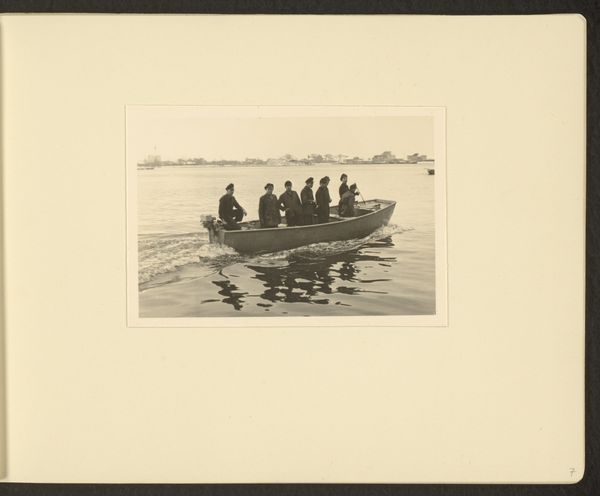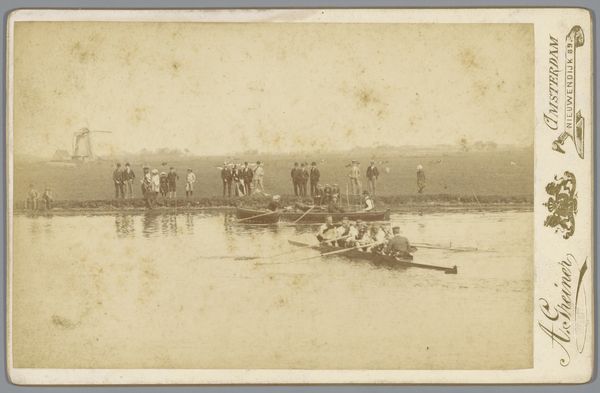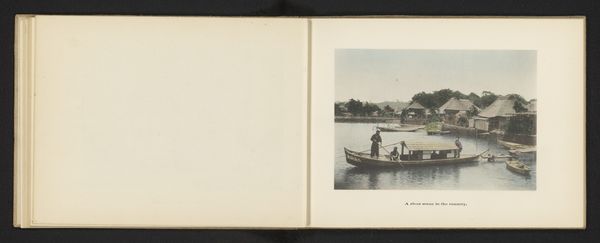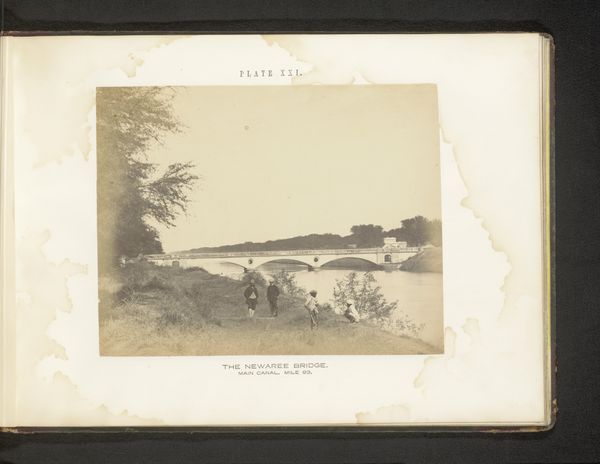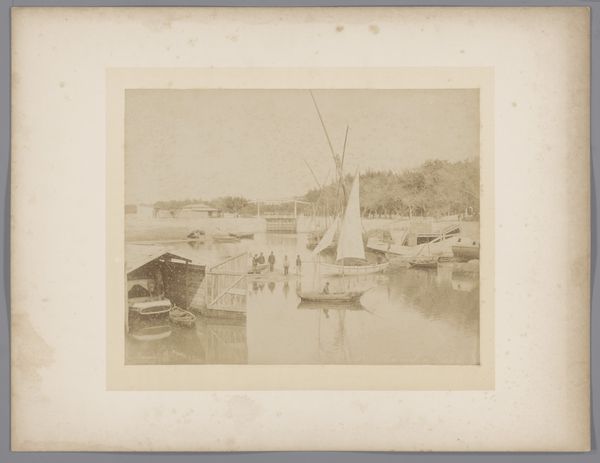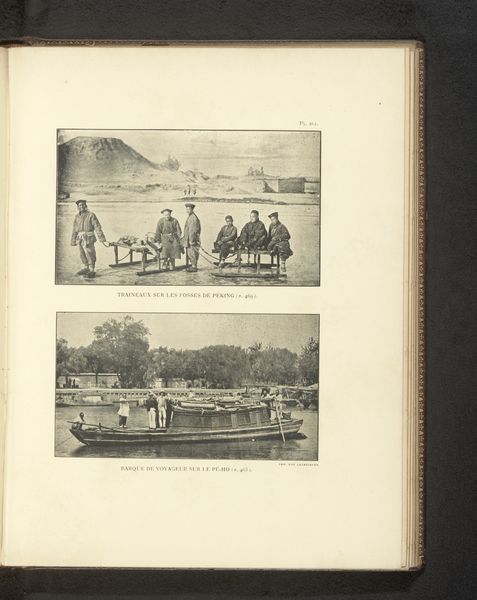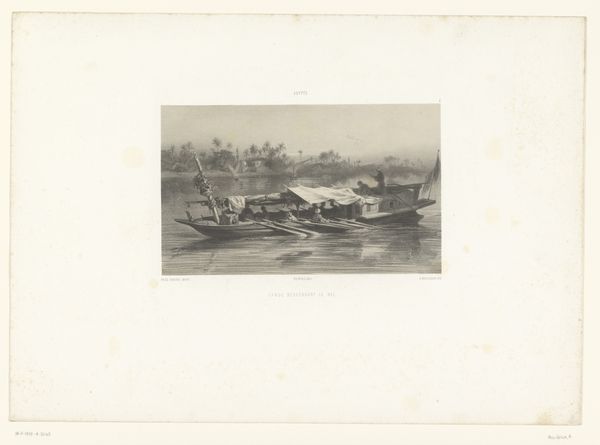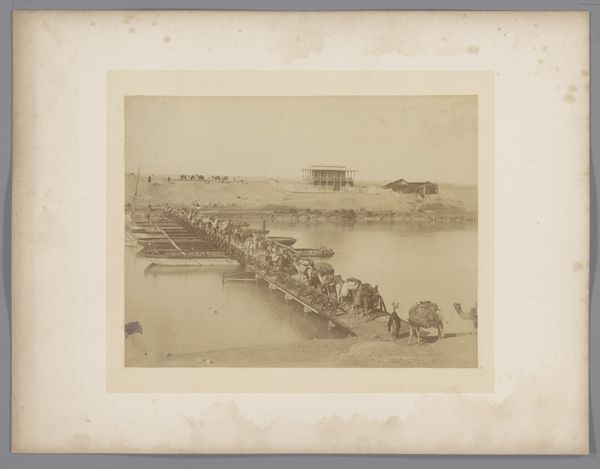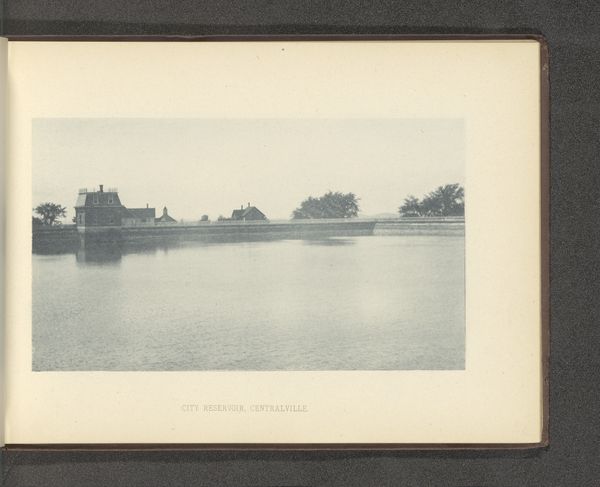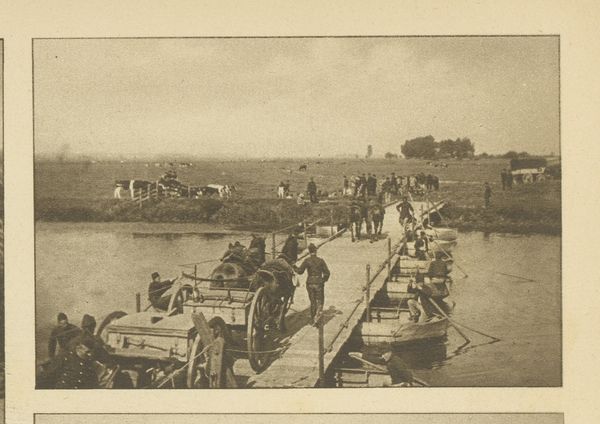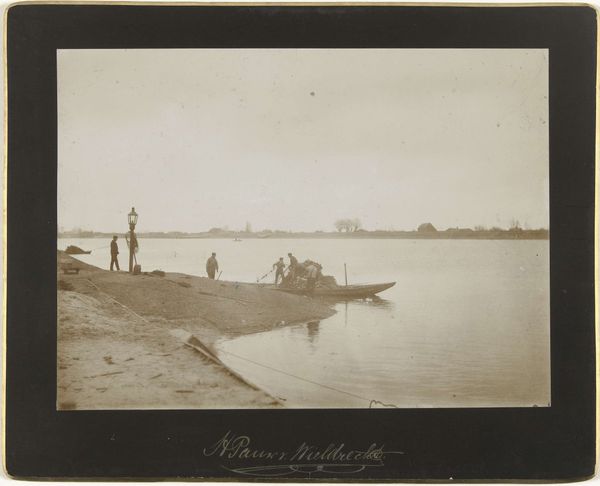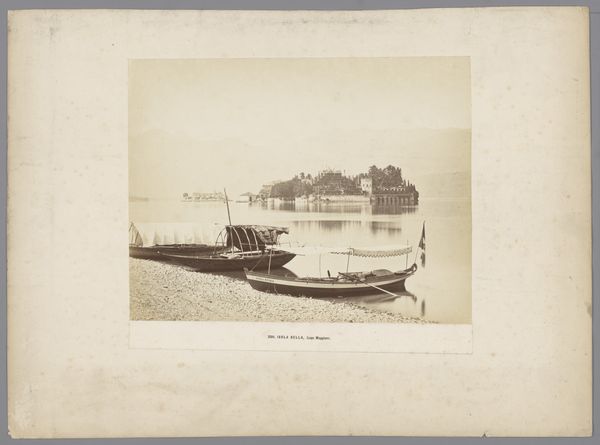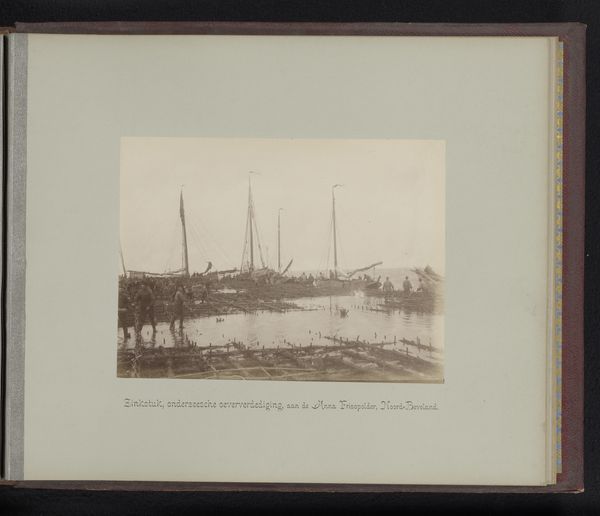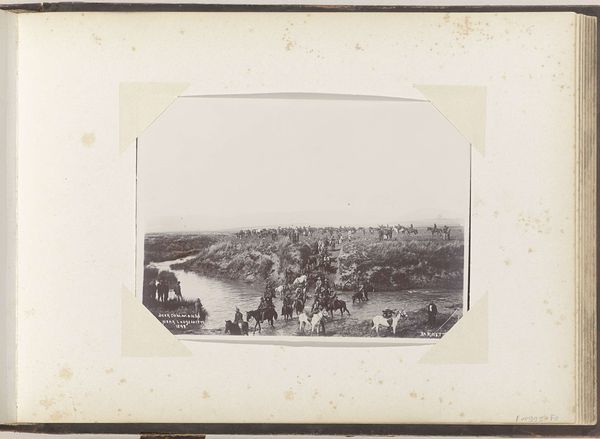
photography
#
landscape
#
photography
#
coloured pencil
Dimensions: height 229 mm, width 265 mm
Copyright: Rijks Museum: Open Domain
Curator: I find something almost ethereally dreamlike about this albumen print. It's called "Rowboats on the Sumida River near Ueno Park in Tokyo, Japan," created before 1897 by Kazumasa Ogawa. The sepia tones combined with hand-applied color lend it this other-worldly feeling. Editor: What strikes me is the layered perspective—the intimacy of the boats close to us against the backdrop of Ueno Park. The image invites contemplation about urban development encroaching upon these small-scale scenes of daily life and leisure. The Sumida River isn't just a body of water; it’s a site reflecting the societal transformations of Meiji-era Japan, you know? Curator: I do, I do. The little vignettes within vignettes remind me of shadow puppets against rice paper—distant city structures and the bustling river trade hint at a hidden performance unfolding behind this beautifully stilled moment. It really brings to mind a sense of quiet movement, like drifting in and out of consciousness. Editor: The arrangement of figures in the boats is interesting. Are we seeing gendered labor here? Or class divisions in public transport? These aren't idle vacationers but ordinary people going about their daily lives. We might question whose story is visible, and whose labor is invisibilized when images of this kind circulate. Curator: Good point! It also feels like a snapshot of collective introspection; each little group cocooned within their vessel. Maybe it’s the monochromatic hues that make me see reflections within reflections? There’s so much quiet storytelling crammed into this one space—personal histories playing out against sweeping social panoramas. Editor: It's a lovely paradox. What seems at first like an innocent slice of life actually engages the tension between photographic "truth" and staged reality in the colonial gaze, you know? But these photographs themselves helped construct and negotiate modern Japanese identity during a time of dramatic political change. Curator: Indeed. Perhaps there's an invitation to recognize that art is at its finest when blurring the boundaries between documentation and self-projection, reminding us to question how our perspectives construct not only what we observe but how we understand ourselves. Editor: So, the magic might lie less in documenting truth, and more in unveiling the myriad realities that emerge as culture encounters itself.
Comments
No comments
Be the first to comment and join the conversation on the ultimate creative platform.
